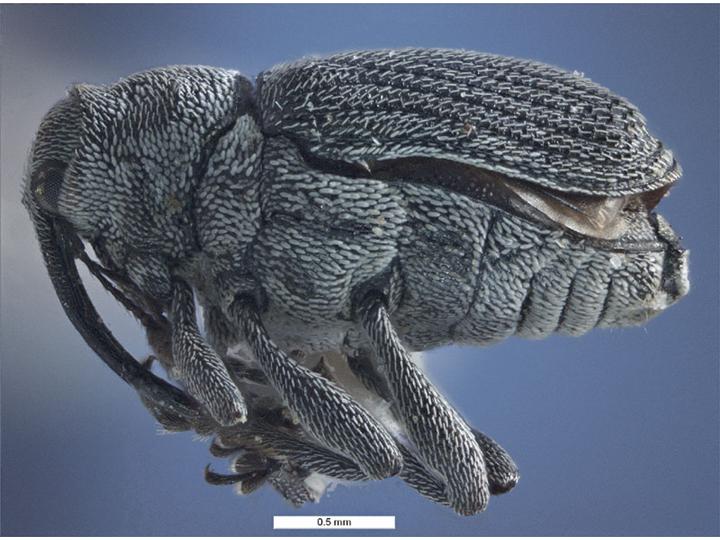Symptoms, description and lifecycle
Adults feed on buds and can cause bud blasting and reduced yield potential, however, it is the larve that do the most damage. Each larvae will eat between two to five seeds on a pod which will show discolourisation on the outside. Mature pods will have small visible pinhead-sized emergence holes made by the larvae upon leaving the pod. The weevil presents an opportunity for the Brassica pod midge (Dasineua brassicae) to lay eggs on young seed pods using the pre-existing holes.
Larval activity of the midge can lead to swollen yellow pods, pod burst and premature seed shedding.
Based on observations in Europe, Cabbage seed pod weevil has only one generation per year. Weevils overwinter as sexually immature adults in soil and leaf litter along paddock margins and in woodlands adjacent to Brassica crops. Mature adults emerge in spring and feed on flowers, buds, stems and pods. Females lay eggs by boring a small hole through the pod walls with their rostrum and placing a single egg inside. Females can lay up to 240 eggs during their life time. Under the right conditions, eggs can hatch after six to ten days. Larvae feed on the inside of pods and immature seeds for two to three weeks before leaving the pod by boring a pin sized hole in the pod wall and dropping to the ground. They dig a hole in the soil up to ten centimetres deep where they pupate. The adults that emerge feed on the remaining crop or other Brassica before settling down to overwinter.
Organism
Ceutorhynchus obstrictus, also known as C. assimilis.
Host range
A wide range of species in the family Brassicaceae. The main species include canola (Brassica napus var napus), broccoli (Brassica oleracea var italica) and turnip rape (Brassica rapa supsp. oleifera). Other affected hosts include various other Brassica species (Indian mustard, cauliflower, cabbage, brussel sprouts, mustard) and oil seed (Crambe abyssinica).
Method of spread
Diapausing adults overwintering in soil or leaf litter is a likely entry route into Australia. C. obstrictus adults can fly well, potentially travelling some kilometres, and D. brassicae is small and can also travel reasonable distances on wind, though tend not to move more than 0.5 km away from host crop areas.
Confused with?
Larvae and adults of C. obstrictus are similar to mining larvae of Ceutorhynchus species such as the cabbage weevil (C. pallidactylus).
Where?
Cabbage seed weevil is considered native to Europe where it is widespread. It is also found in Northern Africa and North America.

Image 25. Adult Cabbage Seedpod Weevil.
Source: Rebecca Graham, Department of Agriculture Western Australia.


